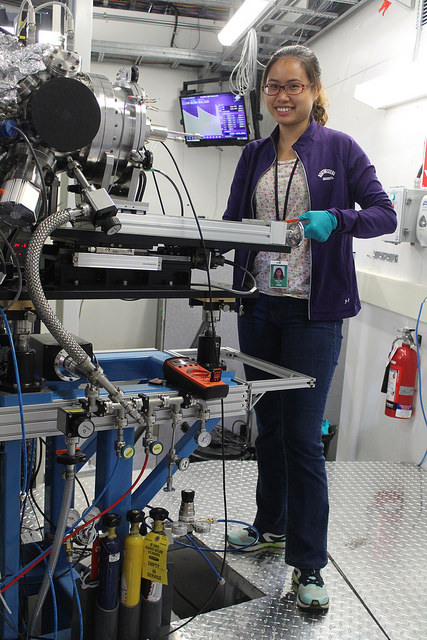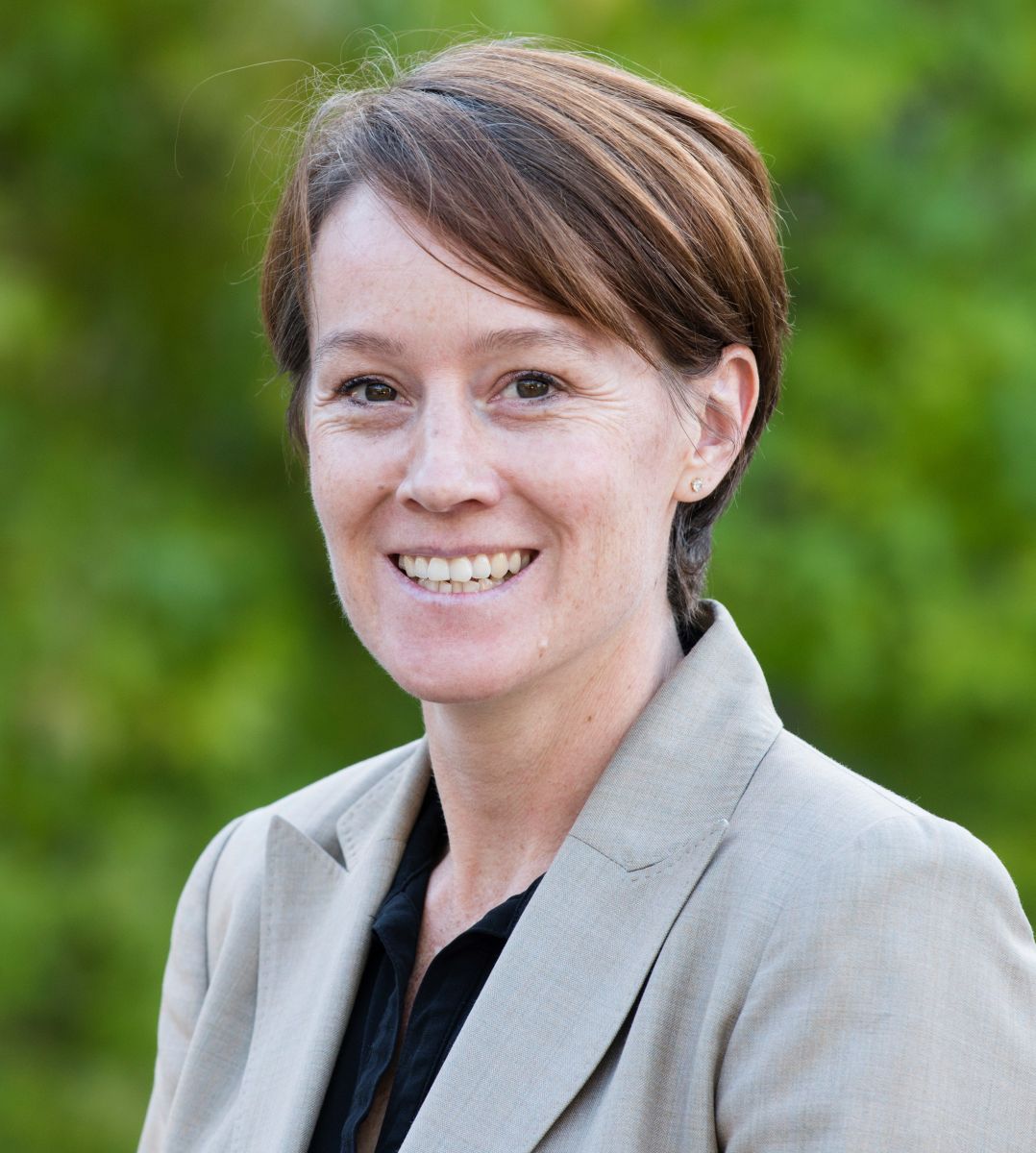One size does not fit all when exploring how carbon in soil affects the climate
This research contributes to understanding of the mechanisms in the carbon cycle that is needed to predict what would happen if the temperature rises due to climate change.
By Lana HaightSoil samples prepared for analysis on SGM beamline.
Scientists from Stanford University are opening a window into soil organic carbon, a critical component of the global carbon cycle and climate change.
“We have to know what kind of carbon is in soil in order to understand where the carbon comes from and where it will go,” said Hsiao-Tieh Hsu, a PhD student in chemistry at Stanford University and a member of a Kate Maher’s research group.

The natural fluxes of soil organic carbon, the exchange of carbon moving from vegetation to the soil and recycled by microorganisms before being stabilized in the soil or returned to the atmosphere, is 10 to 20 times higher than human emissions. Even the smallest change in the flux of soil organic carbon would have a huge impact on the climate.
Soil organic carbon occurs naturally and is part of the carbon cycle. Through photosynthesis, plants absorb carbon dioxide from the atmosphere. As plants and their roots decompose, they deposit organic carbon in the soil. Microorganisms, decomposing animals, animal feces and minerals also contribute to the organic carbon in the soil. In turn, plants and microorganisms “eat” that carbon, which is an essential nutrient.
All of this results in different “flavours” or compounds within the soil, say Hsu and Maher, who is also a faculty member of the Stanford Center for Carbon Storage.

Trying to differentiate between the different “flavours” of organic carbon has been difficult. Previous research involved analyzing soil using harsh chemicals.
“The problem with this is that it would change the chemical composition of what you want to study. What you would see after all the processing is not what was naturally occurring in the soil,” said Hsu, in an interview.
Hsu developed a new approach for using data collected at the Canadian Light Source and combining it with results of other experiments she conducted. Because the method used the brilliantly bright light of the synchrotron, she didn’t need to use chemicals. She dried soil samples, ground the soil into powder and then analyzed the soil’s composition.
Hsu, Maher and their team published the results of their research, “A Molecular Investigation of Soil Organic Carbon Composition across a Subalpine Catchment,” in a recent issue of Soil Systems.
“Soil carbon is the largest terrestrial pool of carbon that is actively cycling. It represents a substantial reservoir of carbon, which is why it’s important to understand it,” said Hsu, who added that although the ocean has more carbon, its carbon dynamics are well established.
“Soil organic carbon, however, is not well understood. As a key component of the global carbon cycle, and one that is sensitive to changes in temperature and moisture levels, changes in the global pool of carbon can substantially impact emissions of greenhouse gasses to the atmosphere, in both positive and negative ways.”
The scientists were surprised that the soil organic carbon differed in the samples they gathered within the East River Basin in Colorado even though the soil and the vegetation were similar.
“When you look at soils in the field and they look the same, you think they should be the same chemically. What Hsiao-Tieh has created with the new method at the CLS is a new window into soil carbon that will help us understand how we might better manage ecosystems and soils into the future. The fact that there is so much difference means that the soil can respond in different ways to changes in climate or changes in land use,” said Maher, in an interview.
While this research is preliminary and much more work needs to be done to refine their soil analysis techniques, it contributes to understanding of the mechanisms in the carbon cycle that is needed to predict what would happen if the temperature rises due to climate change.
Hsu is passionate about using her understanding of chemistry and analytical chemistry to make a difference in the world. She is more convinced than ever that the voice of scientists needs to be heard. She participated in the Rising Environmental Leaders Program at Stanford and spent time in Washington, D.C., learning how the American government makes policy decisions involving science.
“I feel even more invested in helping my community understanding how carbon moves around the planet. This has such a huge impact on our environment but also on our society, our culture, our economics and our health.”
Hsu, Hsiao-Tieh, Corey R. Lawrence, Matthew J. Winnick, John R. Bargar, and Katharine Maher. "A Molecular Investigation of Soil Organic Carbon Composition across a Subalpine Catchment." Soils 2, no. 1 (2018): 6. DOI: 10.3390/soils2010006
